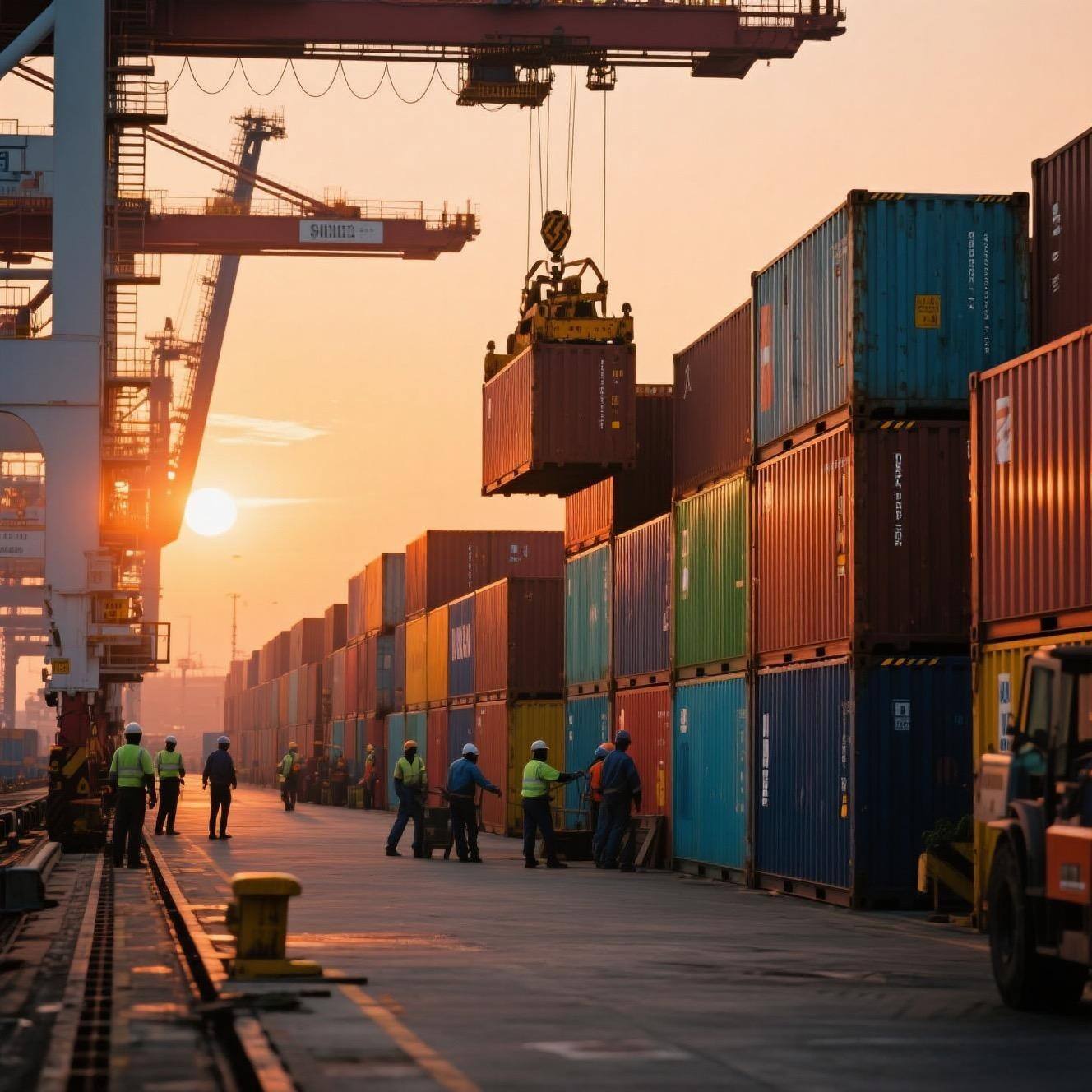Cost Efficiency of FCL for High-Volume Shipments
Per-Unit Cost Savings with Full Container Utilization
For businesses moving large quantities of goods, full container load (FCL) shipments offer real savings compared to other methods. The main reason? When a company fills an entire container, there's simply less wasted space and fewer extra charges from carriers. Most logistics experts agree that getting at least 80% utilization out of a container makes financial sense, which is why many manufacturers and distributors prefer FCL over LCL shipping. Companies that regularly ship big volumes often find themselves in a stronger position to get better deals from freight forwarders, translating into healthier bottom lines. This approach works particularly well for importers/exporters handling bulk items or seasonal products where timing matters most. What we see across various industries is that smart use of FCL helps cut down on unnecessary shipping costs while keeping operations running smoothly.
Bulk Shipping Economies in Global Trade
When companies ship goods using full container load (FCL) methods, they typically see big savings throughout global trade because larger volumes reduce per unit costs. The approach lets businesses plan shipments based on what customers actually need, which helps avoid situations where too much product sits unused or shelves run empty during peak times. Major shipping firms report that going with FCL instead of sending out multiple small containers can cut expenses anywhere between 20% and 30%. For many importers and exporters, these kinds of savings mean they can offer better prices without sacrificing profits, helping them tap into new markets overseas. Some manufacturers even find that these reduced costs allow for reinvestment back into production facilities or employee training programs.
Reduced Handling and Faster Transit Times
Minimized Cargo Transfers During Transportation
Using Full Container Load (FCL) cuts down on the back and forth of moving cargo around, which means less time spent handling stuff and fewer chances for things to get damaged while traveling. When companies ship products in their own dedicated containers, there's no need to transfer them between different transportation methods like from truck to ship and back again. According to recent data from logistics reports, cutting down on these transfers can actually speed up delivery times by roughly 25% across the board. For businesses looking to streamline operations, going with FCL makes sense both economically and practically. Goods stay protected throughout the journey since everything remains in one secure space until it arrives at its final stop.
Direct Routing Advantages Over LCL Consolidation
When companies choose full container load (FCL) shipping instead of less-than-container load (LCL), they avoid those frustrating delays caused by waiting for multiple shipments to consolidate. With FCL, businesses get scheduled deliveries that match their production timelines and what customers need when they need it, which really helps maintain good service standards. Research shows that FCL shipping can cut down transit time by around 15% compared to traditional LCL approaches. For manufacturers who care about getting products out on time and running operations smoothly, this makes all the difference. Meeting delivery deadlines keeps customers happy while making the whole supply chain work better for everyone involved.
Simplified Customs and Documentation Processes
Single Consignee Paperwork for Faster Clearance
Shipping via Full Container Load (FCL) makes document handling far less complicated since there's only one consignee involved. The paperwork gets simpler, meaning less work for administrators and faster movement through customs checkpoints. No longer needing to deal with multiple sets of consignor papers cuts down on mistakes and holdups that plague so many shipments. According to what people in the field often say, businesses can cut their customs processing time by around 30% when they go with FCL instead of Less Container Load (LCL). That kind of efficiency makes FCL look like a smart choice for anyone serious about getting goods where they need to be without unnecessary delays.
Reduced Risk of Inspection Delays
When it comes to customs inspections, FCL shipments generally get picked less often than their LCL counterparts, which tend to attract more attention from officials. Authorities view FCL cargo as coming from a single source, so they see it as posing less risk overall. This perception leads to faster processing times when crossing borders. Industry reports back up what we've seen on the ground too many times before. According to recent trade data, around 15 percent fewer FCL containers end up stuck waiting for inspections compared to mixed load shipments. For companies shipping goods internationally, this difference matters a lot. Less time spent waiting at customs means products reach markets sooner rather than getting bogged down in paperwork or unexpected delays that can throw entire supply chains off track.
Enhanced Security and Cargo Protection
Exclusive Container Use Prevents Third-Party Tampering
One big plus when going with Full Container Load (FCL) shipping is that companies get their own containers all to themselves. No sharing space with other shipments means there's much less chance someone else could mess around with what's inside. Containers assigned specifically to one business make it really hard for anyone unauthorized to get into them during transport. Security reports actually back this up too businesses that switch to FCL typically see about a 40 percent drop in stolen goods compared to when they used Less than Container Load (LCL) options. The real advantage here is simple cargo stays exactly how it was packed at the start point right until it reaches its destination without any interference from outside sources along the way.
Tamper-Evident Seals for High-Value Goods
Shippers transporting expensive items should consider using tamper evident seals on their FCL containers. These little devices do more than just stop people from opening boxes they shouldn't. They give businesses confidence that anyone trying to mess with cargo will leave clear evidence when the container arrives at its destination. According to some studies, companies that start using these seals see fewer insurance claims for damaged or stolen goods. Why? Because would-be thieves think twice before attempting anything when there's a good chance someone will notice right away. That's why many logistics managers view FCL shipping with proper sealing as one of the best ways to keep precious cargo safe during transport. When combined with exclusive container usage, this approach offers real protection against losses that could hurt bottom lines.

Optimal Scenarios for Choosing FCL Shipments
Volume Thresholds: When to Transition from LCL to FCL
Knowing when to switch from LCL to FCL shipping matters a lot for getting the most out of logistics budgets. Most companies find themselves making the jump somewhere between 10 and 15 cubic meters of cargo space needed. Smart businesses watch those volume numbers closely and don't wait too long before switching methods. Some studies show that companies who make this change at the right time save real money on freight bills, which naturally boosts bottom line profits. The main advantage of going full container comes down to simple math - bigger shipments mean lower per unit costs. For anyone dealing with regular international shipping, understanding this basic principle can cut thousands off annual logistics expenses without sacrificing delivery speed or reliability.
Specialized Cargo Requirements Demanding Full Containers
Some cargo just needs special treatment, which means going with full container loads instead of shared space. Full Container Load (FCL) works best when moving things like perishables kept at controlled temps or dangerous goods that need secure transport. The whole point is getting exactly what's needed for those tricky shipments whether they're fragile electronics or oversized machinery parts. According to industry numbers, around two thirds of companies shipping these kinds of goods choose FCL because it makes sense from a compliance standpoint too. Regulations can get pretty strict for certain materials, so having control over the entire container gives peace of mind during transit. Most experienced shippers know this approach pays off in the long run despite higher upfront costs.
By addressing these optimal scenarios, I can make informed decisions on transitioning from LCL to FCL and ensuring specialized cargo gets the tailored solutions needed.
FAQ Section
What is Full Container Load (FCL) shipping?
Full Container Load (FCL) shipping involves the exclusive use of containers for a single shipper, allowing for the entire container space to be utilized, reducing costs.
How can FCL shipping help reduce shipping costs?
FCL shipping reduces per-unit costs by allowing businesses to fill the entire container, thus leveraging economies of scale and negotiating better rates with freight forwarders.
What are the advantages of FCL over Less-than-Container Load (LCL) shipping?
FCL offers reduced handling times, faster transit, simplified paperwork, fewer customs inspections, and enhanced cargo protection compared to LCL shipping.
When should a business transition from LCL to FCL shipping?
The transition typically starts around 10-15 cubic meters of cargo volume, where FCL becomes more cost-efficient, offering better economies of scale.
Is FCL suitable for specialized cargo?
Yes, FCL is ideal for specialized cargo such as temperature-controlled or hazardous materials, providing tailored solutions and compliance with regulations.
Table of Contents
-
Cost Efficiency of FCL for High-Volume Shipments
- Per-Unit Cost Savings with Full Container Utilization
- Bulk Shipping Economies in Global Trade
- Reduced Handling and Faster Transit Times
- Minimized Cargo Transfers During Transportation
- Direct Routing Advantages Over LCL Consolidation
- Simplified Customs and Documentation Processes
- Single Consignee Paperwork for Faster Clearance
- Reduced Risk of Inspection Delays
- Enhanced Security and Cargo Protection
- Exclusive Container Use Prevents Third-Party Tampering
- Tamper-Evident Seals for High-Value Goods
- Optimal Scenarios for Choosing FCL Shipments
- Volume Thresholds: When to Transition from LCL to FCL
- Specialized Cargo Requirements Demanding Full Containers
- FAQ Section




